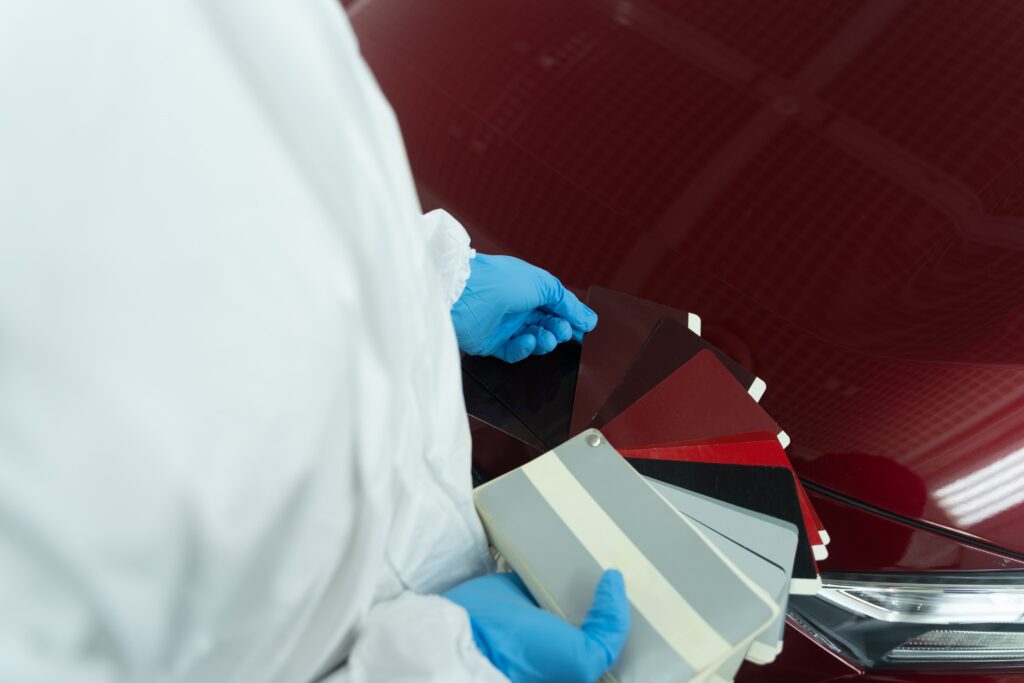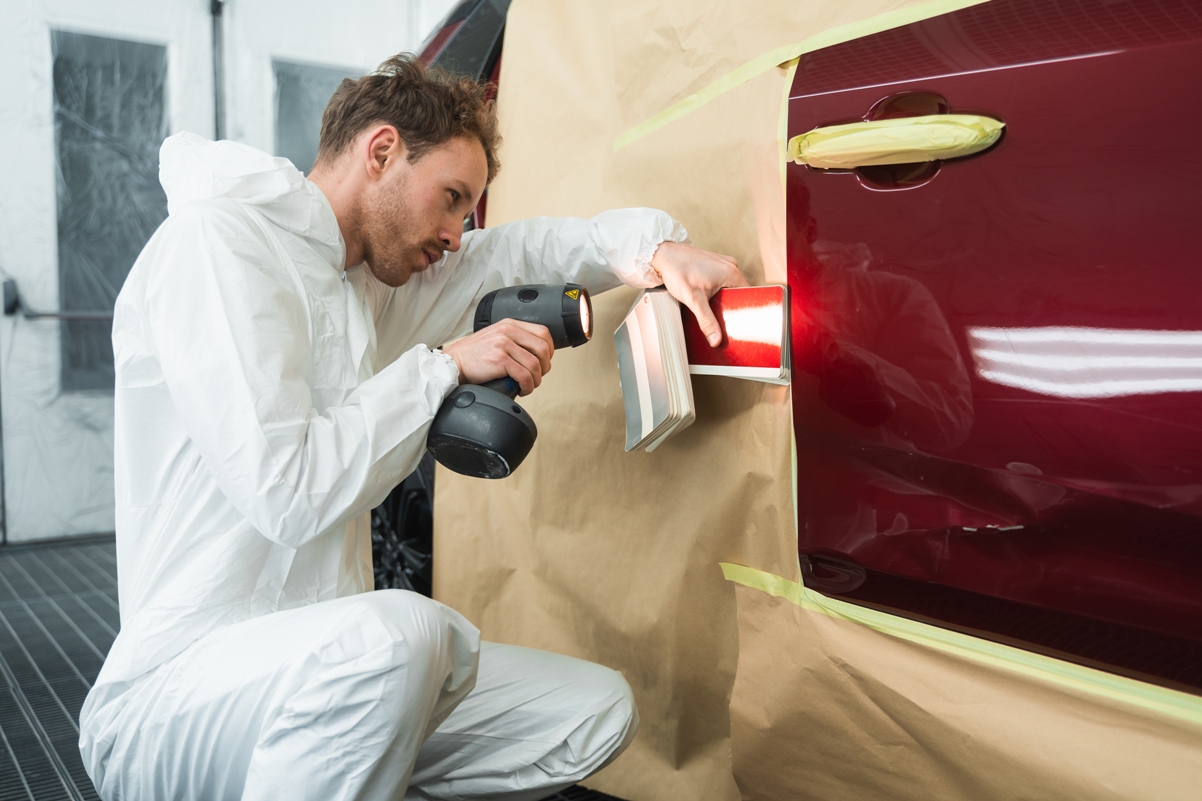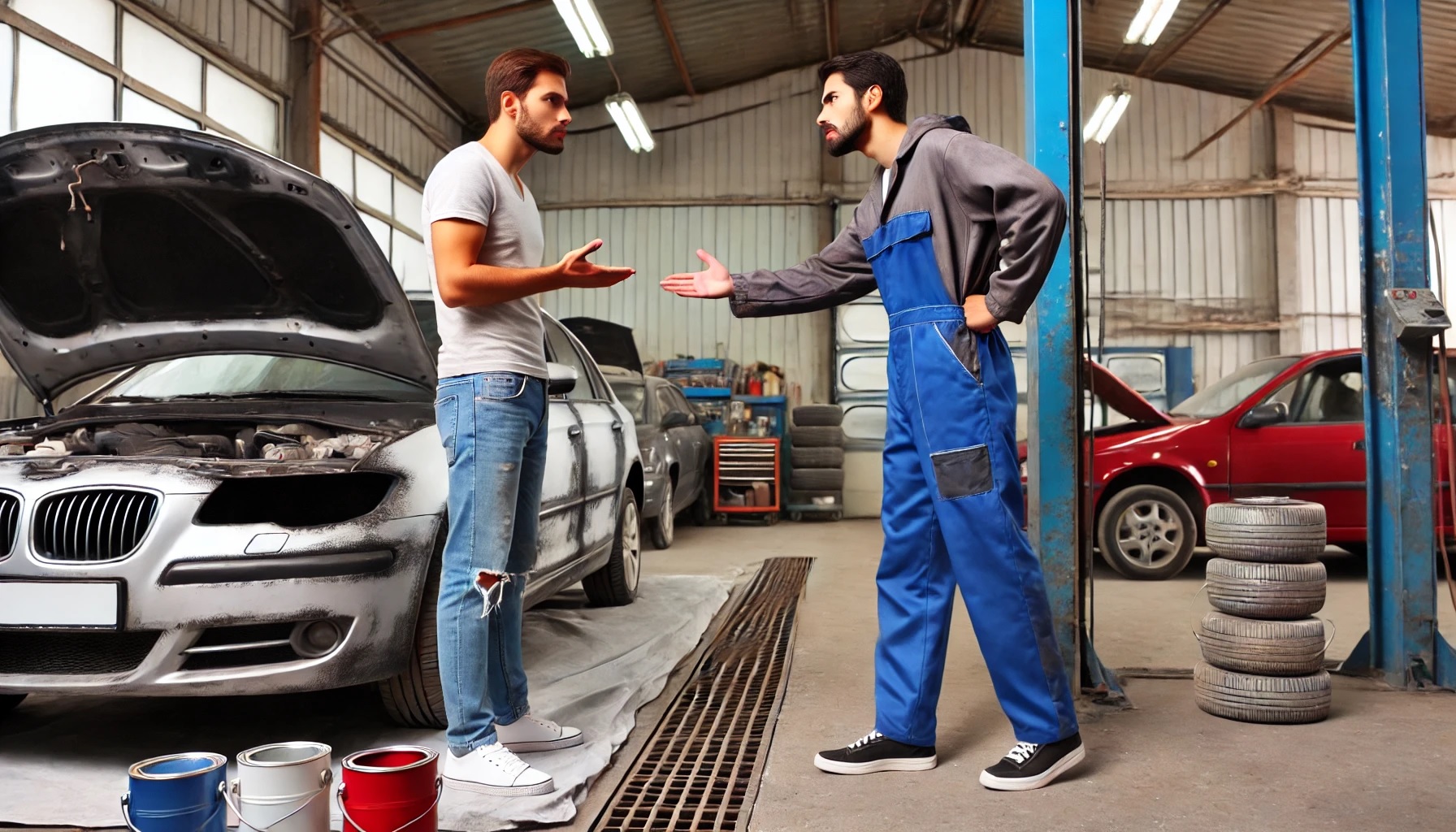In the car refinishing and collision repair industry, achieving a flawless finish and accurate color match is paramount. While many factors influence the outcome, static electricity is a critical and often overlooked component. Understanding how static electricity affects the painting process can significantly improve the quality of repairs and refinishing jobs. This article delves into the role of static electricity, its influence on color matching, and best practices for mitigating its effects, including specific considerations for plastic parts like bumpers.
Understanding Static Electricity in Car Painting
Static electricity is the imbalance of electric charges within or on the surface of a material. In car painting, static charges can accumulate on the vehicle’s surface, the painting equipment, and even in the surrounding environment. These charges are primarily generated through friction, such as sanding or wiping the vehicle, and can lead to various issues during the painting process.
How Static Electricity Influences Painting
- Dust Attraction: Static electricity attracts dust and other airborne particles to the vehicle’s surface. These contaminants can become embedded in the paint, resulting in an uneven finish and visible defects. Dust particles can create tiny bumps or craters, affecting the final appearance and durability of the paint job.
- Paint Flow and Distribution: Static charges can influence the flow and distribution of paint particles. When a static charge is present, it can cause paint particles to repel each other or be unevenly attracted to the surface. This leads to irregularities in the paint layer, such as mottling or tiger striping, which can compromise the uniformity and consistency of the color.
- Color Matching Challenges: Accurate color matching relies on the even application of paint. Static electricity can cause variations in the paint thickness and texture, making it challenging to match the original color precisely. Even slight deviations can result in noticeable differences, especially in metallic or pearl finishes where consistency is crucial.

Static Electricity and Plastic Parts
Plastic parts, such as bumpers, are particularly susceptible to static electricity. Unlike metal surfaces, plastic can hold a more significant static charge due to its insulating properties. This can exacerbate the challenges associated with static electricity in painting processes.
- Increased Dust Attraction: Plastic bumpers tend to attract more dust and contaminants due to higher static charges. This makes it even more critical to address static electricity when preparing plastic parts for painting.
- Adhesion Issues: Static charges on plastic surfaces can interfere with paint adhesion. Poor adhesion can lead to peeling, flaking, or other defects that compromise the durability and appearance of the paint job.
- Specialized Treatments: Plastic parts often require specialized treatments to neutralize static electricity effectively. Using dedicated primers and additives can help improve paint adhesion and reduce dust attraction on plastic surfaces.
Mitigating the Effects of Static Electricity
- Proper Grounding: Ensuring that the vehicle and all painting equipment are properly grounded is essential. Grounding helps neutralize static charges, preventing them from accumulating on the surface. Using anti-static mats and grounding straps can significantly reduce the risk of static-related issues.
- Anti-Static Wipes and Solutions: Prior to painting, use anti-static wipes or solutions to remove static charges from the vehicle’s surface. These products are specially formulated to neutralize static electricity, reducing the attraction of dust and improving paint adhesion.
- Controlled Environment: Maintaining a clean and controlled painting environment minimizes the presence of dust and other contaminants. Use air filtration systems to reduce airborne particles and ensure that the paint booth is free from sources of static generation.
- Humidity Control: Static electricity is more prevalent in dry conditions. Controlling the humidity levels in the paint booth can help reduce static buildup. A relative humidity of around 50-60% is often ideal for minimizing static electricity.
- Proper Handling Techniques: Train technicians to use proper handling techniques to minimize friction and static generation. This includes using clean, lint-free cloths and avoiding excessive rubbing during surface preparation.
- Specialized Products for Plastics: When working with plastic parts, consider using specialized primers and cleaners designed for plastic surfaces. These products help neutralize static charges and improve paint adhesion, resulting in a smoother, more uniform finish.

The Role of Ionizing Air Guns
Ionizing air guns are highly effective tools for neutralizing static electricity on vehicle surfaces, especially plastic parts. These devices emit a stream of ionized air that neutralizes static charges, helping to eliminate dust and other contaminants that can compromise the paint job.
- Efficiency: Ionizing air guns like the Ecogun (EG-2) and NRD Neutralizer AC Anti-Static Gun are designed to efficiently remove static and dust without the need for power cables or batteries, making them convenient and portable
- Application: These guns are used at various stages of the painting process, from surface preparation to final coating, ensuring that static charges are consistently neutralized. The IONSTAR Anti-Stat Gun, for example, can be used on all surfaces and significantly improves paint adhesion and reduces contamination.
- Benefits: The use of ionizing air guns can lead to nearly 100% less dust inclusions, better color matching, and fewer reworks. They help in maintaining a clean surface and provide a smoother, defect-free finish.
Conclusion
Static electricity plays a significant role in the car refinishing and collision repair industry, particularly in terms of color matching and achieving a flawless finish. By understanding its effects and implementing best practices to mitigate static buildup, professional car painters can enhance the quality of their work, ensuring a perfect match and a smooth, defect-free finish. Attention to detail in controlling static electricity, especially on plastic parts like bumpers, and the use of tools such as ionizing air guns will lead to more consistent, high-quality outcomes and greater customer satisfaction.



